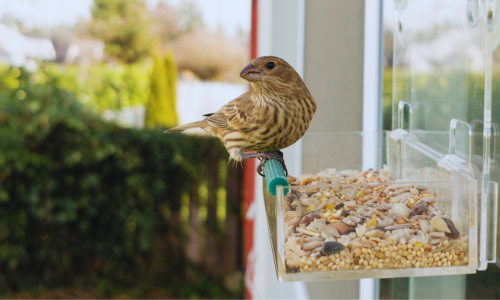
Interacting with wildlife in Brantford and Brant County can bring immense joy and satisfaction. Feeding squirrels, chipmunks, birds, and rabbits in your neighborhood offers a unique opportunity to connect with nature right in your backyard. Watching these little creatures and feathered friends nibble on a treat you've provided can be a heartwarming experience. This simple act of kindness can spark a deeper appreciation for the natural world and enhance community spirit as neighbors come together to support local wildlife.
Creating feeding stations for squirrels, chipmunks, birds, and rabbits can be both fun and beneficial. These stations can be designed to blend into the natural surroundings, ensuring they are safe and inviting for wildlife. Consider using natural materials like wood and placing them in areas where these animals are known to frequent. For birds, add bird feeders at different heights, and for rabbits, place feeding stations low to the ground. This not only provides a reliable food source for the animals but also adds a charming touch to your garden or yard.
It's important to feed squirrels, chipmunks, birds, and rabbits the right types of food to ensure their health and well-being. Nuts like acorns, walnuts, and hazelnuts are excellent choices for squirrels and chipmunks, while seeds and fruits like apples and berries are great for birds. Rabbits enjoy leafy greens, carrots, and hay. Avoid processed foods and those high in sugar or salt. Providing a variety of foods can help maintain a balanced diet for these animals, promoting their overall health and vitality.
Creating habitats for squirrels, chipmunks, birds, and rabbits can be a rewarding DIY project. Building simple shelters, birdhouses, or nesting boxes provides safe havens for these animals and enhances your yard's natural appeal. Use natural, untreated wood and ensure the structures are well-ventilated and weather-resistant. Placing these habitats in quiet, sheltered spots can encourage wildlife to take up residence.
Embracing photography and nature observation in your backyard and neighborhood is a wonderful way to connect with the natural world and appreciate its beauty up close. Whether you're capturing the vibrant colors of songbirds, the delicate dance of butterflies among flowers, or the playful antics of squirrels and chipmunks, photography allows you to document and share these precious moments. Take time to observe the subtle changes in seasons, the diversity of wildlife species that visit, and the intricate ecosystems at play. By honing your observation skills and documenting these experiences, you not only deepen your own understanding of local biodiversity but also contribute to conservation efforts by raising awareness of the natural wonders that surround us. Grab your camera, step outside, and let the wonders of nature unfold before your lens.
Adjusting feeding practices based on the seasons can benefit squirrels, chipmunks, birds, and rabbits. In spring and summer, focus on providing fresh fruits and vegetables. In fall, increase the supply of nuts and seeds for squirrels and chipmunks, and offer high-energy foods like suet for birds. During the colder months, consider offering more leafy greens and hay for rabbits. Seasonal adjustments ensure that the animals receive the nutrition they need throughout the year.
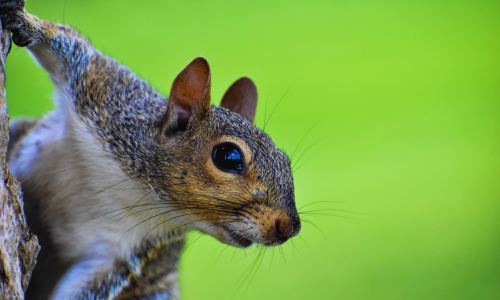
Feeding wildlife is a topic surrounded by myths and misconceptions, which can impact both human behavior and animal welfare. Here are some common myths debunked with facts:
Myth: Feeding wildlife helps them survive.
Fact: While it may seem helpful, feeding wildlife can lead to dependency on human-provided food, which disrupts natural foraging behaviors and can cause nutritional imbalances.
Myth: Feeding wildlife makes them friendlier.
Fact: Feeding wildlife, such as raccoons or squirrels, can lead to habituation, where animals lose their natural fear of humans and may become aggressive or pests.
Myth: It's harmless to feed birds, squirrels, and chipmunks in your backyard.
Fact: While feeding small amounts of appropriate food can be enjoyable, overfeeding can lead to health issues for the animals and alter their natural behavior patterns.
Myth: Feeding bread to ducks and geese is good for them.
Fact: Bread lacks essential nutrients for waterfowl and can lead to malnutrition and overcrowding, contributing to water pollution and unhealthy bird populations.
Myth: Wildlife will starve without human-provided food.
Fact: Wildlife species have adapted over millennia to find food sources naturally. Supplemental feeding can disrupt their natural foraging instincts and survival skills.
Understanding these myths and facts can help promote responsible interactions with wildlife in Southern Ontario, ensuring that our actions support, rather than harm, the natural habitats and behaviors of local animals.

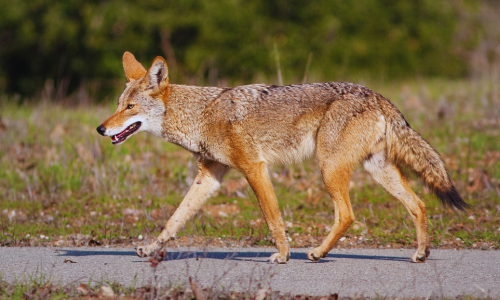
While feeding squirrels, chipmunks, birds, and rabbits can be a delightful way to interact with local wildlife, it's essential to recognize that not all animals should be fed. In Southern Ontario, there are specific species that should not be encouraged to rely on human-provided food. Here’s why:
Raccoons and skunks, though common in Southern Ontario, should not be fed by humans. These animals are naturally opportunistic feeders and can easily become habituated to human food sources, leading to increased conflicts. When raccoons and skunks lose their fear of humans, they can become a nuisance, rummaging through garbage, damaging property, and potentially spreading diseases like rabies. Additionally, human food is often unhealthy for them, causing nutritional imbalances and health issues.
While it might seem harmless to feed deer, doing so can have serious consequences. Deer can become dependent on human-provided food, which can disrupt their natural foraging behaviors and diets. In winter, feeding deer can lead them to congregate in large numbers, increasing the spread of diseases such as Chronic Wasting Disease (CWD). Moreover, feeding deer can attract predators like coyotes and wolves to populated areas, leading to further safety concerns for both humans and wildlife.
Coyotes are adaptable predators that can thrive in urban environments, but feeding them can lead to problematic behaviors. When coyotes are fed by humans, they lose their natural wariness and can become bold, sometimes even aggressive. This can increase the likelihood of negative encounters with pets and people. To maintain healthy boundaries and ensure coyotes continue to fulfill their natural ecological roles, it’s important to avoid feeding them and to keep pet food and garbage inaccessible.
Feeding seagulls and pigeons, often seen as harmless, can lead to overpopulation and unsanitary conditions. These birds can become reliant on human food, which is typically less nutritious than their natural diet. Overpopulation can result in increased droppings, which can spread diseases and create messes in public areas. Encouraging these birds to find natural food sources helps maintain a balanced urban ecosystem.
Although beavers are fascinating creatures and play a crucial role in their ecosystems, feeding them can disrupt their natural behaviors. Beavers are skilled foragers, and their diet consists primarily of tree bark, aquatic plants, and leaves. Human food can be harmful to them and may lead to malnutrition. Additionally, beavers that become accustomed to humans may cause significant damage to property as they seek out food and materials for dam-building.
Canadian Geese, while often seen in Southern Ontario, should not be encouraged with supplemental feeding. These geese are migratory birds that typically find their food naturally in wetlands, grasslands, and agricultural fields. Feeding them can lead to overpopulation in urban areas, which can result in environmental issues such as water contamination from excessive droppings. Moreover, habituating Canadian Geese to human-provided food disrupts their natural migratory patterns and behaviors, making them more dependent on human interactions for survival. To maintain a healthy balance in their populations and environments, it's best to appreciate these majestic birds from a distance and avoid feeding them intentionally.

Protecting your home from wildlife is an essential step in coexisting harmoniously with nature. In Southern Ontario, various animals, including raccoons, squirrels, and mice, may seek shelter in or around your home, especially during extreme weather conditions. Wildlife-proofing your home not only safeguards your property but also ensures the safety and well-being of the animals by preventing unwanted encounters. Here are some effective strategies for wildlife-proofing your home:
One of the primary attractions for wildlife is food waste. Ensure your trash and compost bins are securely closed with tight-fitting lids. Consider using animal-resistant garbage cans or storing bins in a locked shed or garage until collection day. This will deter raccoons, skunks, and other scavengers from rummaging through your waste and creating a mess.
Inspect your home for potential entry points that wildlife could exploit. Common areas include gaps around windows and doors, vents, chimneys, and cracks in the foundation. Use caulk, steel wool, or hardware cloth to seal these openings. For chimneys, install a chimney cap to prevent animals from entering your home. Regularly check and maintain these seals to keep them effective.
A well-maintained yard can be a deterrent for wildlife looking for shelter. Trim back overgrown shrubs and trees, especially those close to your home, to eliminate potential nesting sites. Keep grass cut short and clear any fallen fruits or nuts that might attract animals. If you have bird feeders, clean up any spilled seeds that could draw unwanted visitors like rodents.
If you have a garden, consider installing fencing to keep rabbits, deer, and other animals from feasting on your plants. Use mesh or wire fencing with small openings to prevent smaller animals like chipmunks from squeezing through. Raised garden beds or hoop houses can also offer added protection. Additionally, using natural repellents like garlic, chili powder, or commercial products can help deter wildlife from your crops.
While bird feeders are a wonderful way to attract and support local bird populations, they can also attract unwanted wildlife. Position feeders away from your home and use baffles to prevent squirrels from accessing them. Clean up any spilled seeds regularly and bring feeders inside at night to avoid attracting nocturnal animals like raccoons and skunks.
Pet food can be a major attractant for wildlife. Store pet food indoors and feed pets inside whenever possible. If you must feed your pets outside, only leave food out during meal times and bring it back inside once they are finished. This will help prevent wildlife from associating your home with a reliable food source.
Motion-activated lights can deter nocturnal wildlife from approaching your home. These lights startle animals and make them less likely to explore further. Place these lights around entry points and other vulnerable areas to increase their effectiveness. Additionally, the lights can provide extra security by illuminating your property at night.
There are various humane deterrents available to keep wildlife away from your property. Ultrasonic devices emit sounds that are unpleasant to animals but inaudible to humans. Reflective tape, scarecrows, and decoy predators like owl statues can also be effective. Rotate or move these deterrents periodically to prevent animals from becoming accustomed to them.
By implementing these wildlife-proofing measures, you can protect your home while ensuring that local wildlife remains safe and undisturbed. Taking these steps promotes a healthy coexistence with nature, allowing you to enjoy the beauty and diversity of Southern Ontario’s wildlife without the challenges of unwanted animal encounters.
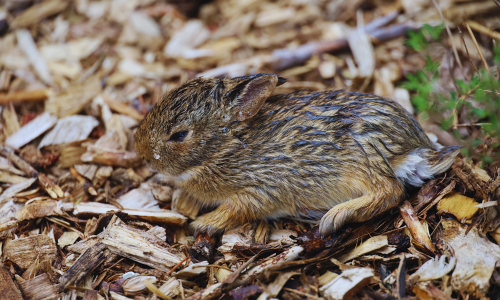
Encountering a young animal alone can be a concerning experience, and it’s natural to want to help. However, not all solitary young animals are orphaned. Many species in Southern Ontario leave their young unattended for periods while they forage for food or distract predators. Misidentifying an orphaned animal can lead to unnecessary human intervention, which can be harmful. Here are some guidelines to help you determine if an animal truly needs assistance:
Healthy Appearance: A healthy young animal will typically have bright eyes, clean fur or feathers, and appear well-nourished. If the animal looks healthy and alert, it is likely being cared for by its parents.
Vocalizations: Orphaned animals often make continuous distress calls. If you hear persistent crying or chirping, the animal might be in need of help.
Movement and Activity: Young animals that are active and exploring may not be orphaned. For example, fledgling birds are often seen hopping on the ground as they learn to fly and are still being fed by their parents nearby.
Fledgling Birds: Fledglings are young birds that have left the nest but are still under parental care. They might appear helpless as they hop on the ground, but their parents are usually nearby, bringing food and keeping an eye on them. Unless a fledgling is in immediate danger, such as being in a high-traffic area, it is best to leave it alone.
Rabbits: Baby rabbits, or kits, are often left alone in their nests, which are shallow depressions in the ground covered with grass and fur. The mother returns only a few times a day to nurse them. If the kits look healthy and the nest appears undisturbed, they are likely not orphaned.
Squirrels: Juvenile squirrels may venture out of the nest and explore. If you find a young squirrel that seems active and healthy, it is likely not orphaned. However, if the squirrel appears lethargic, injured, or is crying continuously, it may need assistance.
Injury or Illness: If the animal is visibly injured, bleeding, or shows signs of illness such as lethargy, labored breathing, or significant weight loss, it likely needs help.
Cold or Wet: Young animals that are cold or wet may have been abandoned or orphaned. For example, baby mammals should feel warm to the touch, and nestling birds should be in a dry, warm nest.
Absence of Parents: If you have observed the animal for several hours and there is no sign of the parents returning, it might be orphaned. For baby mammals, observe from a distance to avoid scaring the parents away.
Observe from a Distance: Before intervening, watch the animal from a safe distance for several hours. This will help you determine if the parents are returning.
Avoid Handling: Minimize handling to avoid stressing the animal. If you must move it to a safer location, use gloves or a towel.
Contact a Wildlife Rehabilitator: If you determine the animal is orphaned or injured, contact a local wildlife rehabilitator for assistance. They have the expertise and resources to care for and rehabilitate the animal properly. In Southern Ontario, organizations like the Toronto Wildlife Centre or the Ontario Wildlife Rescue can provide guidance.
Provide Temporary Shelter: If immediate help is not available, place the animal in a secure, quiet location, such as a box lined with soft cloth, and keep it warm. Do not attempt to feed or provide water unless instructed by a wildlife professional.
By following these guidelines, you can make informed decisions and provide the best possible help to orphaned animals. Responsible intervention ensures that young wildlife has the best chance of surviving and thriving in their natural habitat.

If you encounter injured, orphaned, or abandoned wildlife in Southern Ontario, Hobbitstee Wildlife Refuge in Jarvis, Ontario, is the place to contact. This safe and highly equipped facility specializes in the rehabilitation of sick, injured, and orphaned wildlife. With a dedicated team of professionals and volunteers, Hobbitstee Wildlife Refuge provides the care and treatment necessary to help these animals recover and return to their natural habitats. Their commitment to wildlife conservation ensures that every animal receives the best possible chance for survival and a healthy future.
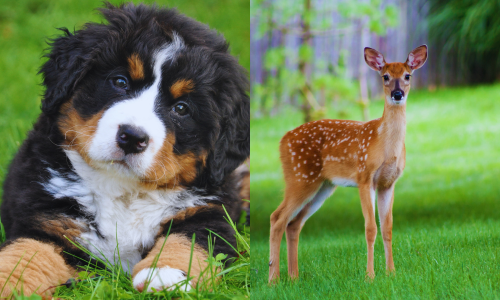
Ensuring the safety of both your pets and local wildlife is crucial when they share the same outdoor spaces. While it can be delightful to have both pets and wildlife in your backyard, it's important to manage their interactions to prevent conflicts and ensure the well-being of all animals involved. Here are some key safety tips to help you create a harmonious environment for pets and wildlife in your backyard:
Supervising your pets when they are outside is the most effective way to prevent negative interactions with wildlife. Keep an eye on them, especially during dawn and dusk when wildlife activity is at its peak. Consider using a leash or a secure enclosure if you have a particularly curious or energetic pet.
Designate specific areas of your yard as safe havens for wildlife, away from where your pets typically play. Plant native shrubs and trees to provide cover and nesting sites for birds and small mammals. Establish feeding stations and bird feeders in areas that are less accessible to pets to reduce the risk of encounters.
Pet food left outdoors can attract wildlife, leading to potential conflicts. Feed your pets indoors whenever possible. If you must feed them outside, remove any leftover food promptly. Ensure that water bowls are kept clean and placed in areas where wildlife is less likely to drink from them.
Training your pets to avoid wildlife can significantly reduce the risk of harmful encounters. Use positive reinforcement techniques to teach your dogs and cats to stay away from birds, squirrels, and other small animals. Consistent training can help them understand that chasing or catching wildlife is not acceptable behavior.
If you have small pets like rabbits or guinea pigs that spend time outdoors, ensure they are kept in secure, predator-proof enclosures. These enclosures should have sturdy walls and a roof to protect them from both predators and curious wildlife. Regularly check the enclosures for any signs of damage or potential entry points.
Keeping your pets up-to-date on vaccinations and deworming treatments is essential for their health, especially if they have any contact with wildlife. Diseases and parasites can be transmitted between wildlife and pets, so maintaining your pets' health can prevent potential issues.
To keep wildlife away from areas where your pets spend time, consider using humane deterrents. Motion-activated lights, sprinklers, and ultrasonic devices can discourage wildlife from entering your yard without causing them harm. Ensure these deterrents are safe for all animals and do not cause undue stress.
Be vigilant for signs of injured or orphaned wildlife in your backyard. If you notice any animals that appear to be in distress, contact a local wildlife rehabilitator for assistance. Keep your pets away from these animals to prevent further stress or injury.
Indoor cats live longer, healthier lives and pose less of a threat to local wildlife. If you want your cat to enjoy the outdoors safely, consider building a "catio" or using a harness and leash for supervised outdoor time. This helps protect both your cat and the birds and small mammals in your yard.
By implementing these safety tips, you can create a backyard environment where both your pets and local wildlife can coexist peacefully. Taking these precautions ensures that your pets remain safe and healthy while allowing you to enjoy the beauty and diversity of wildlife in your own backyard.
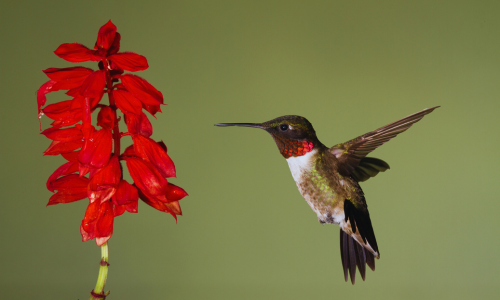
Transforming your garden into a wildlife-friendly haven not only enhances the beauty of your outdoor space but also supports local biodiversity. A well-designed garden can provide essential resources such as food, water, shelter, and nesting sites for a variety of animals, including birds, butterflies, bees, and small mammals. Here are some tips to create a garden that attracts and supports wildlife:
Native plants are the cornerstone of a wildlife-friendly garden. They have evolved alongside local wildlife and provide the best food and habitat for native species. Choose a variety of plants that bloom at different times of the year to provide a continuous food source. Some excellent choices for Southern Ontario include:
A reliable water source is essential for attracting wildlife. Birds, butterflies, and other animals need water for drinking and bathing. Consider adding one or more of the following features:
Wildlife needs safe places to hide from predators, rest, and raise their young. Provide a variety of shelters and nesting sites:
Pesticides and herbicides can harm beneficial insects and other wildlife. Opt for organic gardening practices and encourage natural pest control methods:
Pollinators are crucial for the health of your garden and the broader ecosystem. Plant a variety of flowers that provide nectar and pollen throughout the growing season. Include plants with different flower shapes, sizes, and colors to attract a diverse range of pollinators, such as:
Resist the urge to tidy up every corner of your garden. Leaving some areas wild and undisturbed can provide critical habitat for wildlife. Allow a patch of grass to grow long, leave fallen leaves in place, and let dead wood decompose naturally. These practices support insects, birds, and small mammals by providing food, shelter, and nesting materials.
Composting yard waste and kitchen scraps can enrich your soil and support a healthy garden. Compost attracts earthworms and other beneficial organisms that improve soil health and provide food for birds. Mulching with organic materials like straw, wood chips, or leaves helps retain moisture, suppress weeds, and create a habitat for soil-dwelling creatures.
Regularly observe your garden to see which wildlife species visit and how they use the space. Keep a journal or take photographs to document the diversity and behaviors of your garden's inhabitants. Sharing your observations with local wildlife organizations or participating in citizen science projects can contribute valuable data to broader conservation efforts.
By following these tips, you can create a vibrant, wildlife-friendly garden that supports and attracts a variety of species. Not only will your garden become a sanctuary for local wildlife, but you'll also enjoy the beauty and serenity that comes with a flourishing, biodiverse ecosystem.

Creating a harmonious environment where wildlife and humans can coexist peacefully requires understanding, compassion, and responsible actions. Whether you're feeding squirrels and chipmunks, identifying orphaned animals, wildlife-proofing your home, or cultivating a wildlife-friendly garden, each effort contributes to the well-being of local ecosystems. By respecting the natural behaviors and needs of wildlife, we can protect their habitats and ensure their survival for future generations to enjoy.
Let's continue to learn, adapt, and advocate for practices that promote biodiversity and environmental stewardship in Brantford and Brant County and beyond. Together, we can make a positive impact and foster a world where both wildlife and humans thrive in harmony with nature.